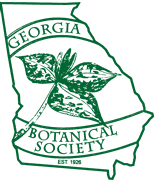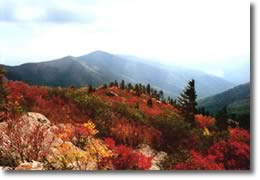
The Georgia Botanical Society
Dedicated
to the study and preservation of Georgia's wild, native,
rare and endangered wildflowers and plant life
You've reached an old page of our web site. Please visit www.gabotsoc.org for our current site.
Botanical Articles and Educational Information
 Following is a list of articles written by Georgia Botanical Society members, the Georgia
Plant Conservation Alliance, and observers, scientists, writers and students
of the southern Appalachian wildflowers, geology, and habitats. The purpose
of these articles is to provide educational materials for readers of all levels,
and spread the word about the state of our native wildflowers and other plants.
Following is a list of articles written by Georgia Botanical Society members, the Georgia
Plant Conservation Alliance, and observers, scientists, writers and students
of the southern Appalachian wildflowers, geology, and habitats. The purpose
of these articles is to provide educational materials for readers of all levels,
and spread the word about the state of our native wildflowers and other plants.
Trackrock Gap : In northeast Georgia, a description of the unique geology that supports a variety of rare plants including Fringed Gentian.
Fringed Gentian : Detailed description of the plant from the Georgia Plant Conservation Alliance, plus information on how to help conserve this rare wildflower.
Tugaloo Mosaic : A very diverse geologic and botanic region spanning northeast Georgia and portions of South Carolina. 2005 GA BotSoc Annual Pilgrimage.
Tallulah Gorge : Description of this unique and spectacular gorge, full of waterfalls, rare wildflowers and wildlife. Unusual geology of the ancient formations of the southern Appalachians helps explain why this is such a unique place.
Okefenokee Swamp: A very detailed description of the formation of the famous Okefenokee Swamp, its geology and various plant life communities. BotSoc Field Trip on March 22-23, 2003 .
Shell Bluff: A description of this unusual site in Burke County, south Georgia, overlooking the Savannah River. Trees, shrubs and herbs represented by species typical of the Blue Ridge, limestone calcareous soils, clay, chert, and fossiliferous sands. Evidence that the Fall Line from Augusta to Columbus, Georgia represents an ancient coastline.
Floyd County Prairies: Floyd County in northwest Georgia is home to islands of prairie grasslands and wetlands more commonly found in the Great Plains and the Black Belt of Mississippi, Alabama and central Georgia. Dry grasslands, wetlands and creek floodplains exist over primarily calcareous soils, supporting many wildflowers, trees and grasses rare to Georgia. The Floyd County Prairies are unique sites of high plant diversity supporting many rare and endangered plants, and are considered a top priority for conservation efforts. The prairies are currently under the protection and management of The Nature Conservancy. Georgia BotSoc Field Trip on September 14, 2002.
Anita Reaves, Membership Chair
770-827-5186
All contents
of this website(except where otherwise noted) ©2002-2007 Georgia Botanical
Society.
All rights reserved.
The Georgia Botanical Society is a private non-profit organization under IRS
501(c)3, Founded in 1926.
Questions, comments or problems with this website, please contact: webmaster@gabotsoc.org
Home | Newsletter | Field Trips | Tipularia | Links | Articles | Contact Us | Join!